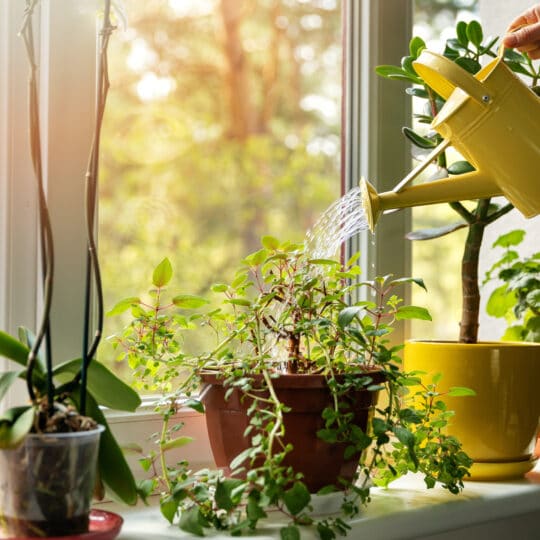Completing a Plant Health Evaluation
Learn the Signs of Plant Health and Issues
Posted
February 4, 2021

While the plants outside may be dormant, the ones indoors may be thriving—or in need of some TLC. Here are some tips on completing a plant health evaluation for your garden, indoors and out.
Plant Health Evaluation
You can tell a lot about a plant’s health just by looking at it. Take notice of the leaves, stems, and branches. Are they wilting, discolored, or broken? Touch the soil around the plant. Is it soft and spongy or dry and hard? After doing a quick evaluation, you should have a general idea of its health. However, there are some parts you can’t see—like the roots. This requires a little more investigation and possibly a visit from a plant professional.
Here are some general signs of healthy plants:
- New and steady growth
- Full, firm leaves
- Vibrant flowers or emerging buds
- Rich soil
Unhealthy plants typically show these signs:
- Wilted, curled, or discolored leaves
- Leaf spots or holes
- Leaf drop
- Bent and discolored branches
- Stunted stems and roots
- Deformed flowers and fruit
- Compacted soil
- Discolored growth
- Fungi
Some plants can bounce back from these issues, depending on the cause. It’s best to prevent problems with proper lighting, water, and fertilizer. Or call a plant pro at the first sign of trouble.
Predicting Plant Problems
If you notice any signs of unhealthy plants, there could be several reasons:
- Pests usually nibble at the leaves or only leave a skeleton behind.
- Any discolored growth could be a fungus.
- Stunted growth could be a disease.
- When leaves wither, change color, and drop off, you could be watering too much or not enough.
To truly gauge what’s causing problems with your plants, it’s best to consult an expert. Contact Elite Tree Care for more information on what could be causing issues with your plants and what can be done to help.